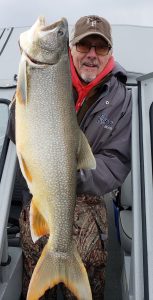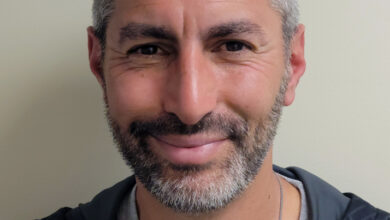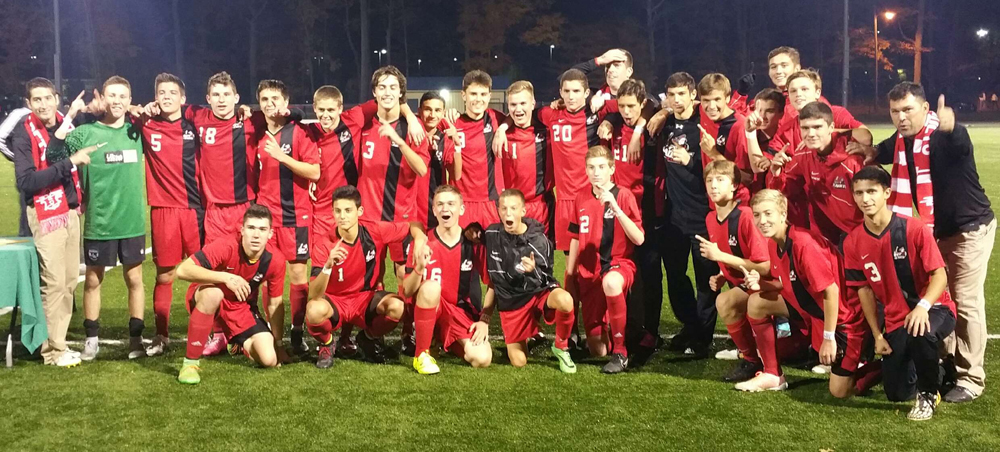The Lower Niagara River

Believe it or not, there is some great open water fishing still going on now about an hour drive west of Rochester in the Lower Niagara River. The famous river is producing good catches of trout and walleyes as we speak. The Buffalo News runs a weekly photo gallery called “Catches of the Week” that I look at online religiously. For the last month, there have been a half dozen pictures of nice steelhead, brown trout, and walleyes being caught there. If you search online for “Buffalo News catches of the week” you will see what fish were caught last week in the region.
For anglers willing to brave the cold, the Lower Niagara can be fished all winter and is great fishing year-round with different opportunities during each season of the year. The lower river is well known for its Chinook salmon, steelhead (rainbow trout), and walleye fishing.
The Niagara River has open water year-round due to its swift current as it flows northward from Lake Erie to Lake Ontario for a distance of 36 miles. The river is comprised of two parts, the Upper and Lower Niagara, separated at Niagara Falls. The Lower Niagara River is approximately 14 miles in length, and fishing opportunities exist from the Whirlpool north to the mouth of the river at Lake Ontario. The river supplies Lake Ontario with about 80 percent of its water. The outflow of the river into Lake Ontario is a fishing hot spot for trout, salmon, walleye, and other sportfish.
Be aware the international border runs down the middle of the lower river and each side requires a fishing license when fishing the whole river. If you stick to the east half of the river you will be fine with a New York license. New York State and Province of Ontario have separate licenses and angling regulations.
The most common method used by trout, salmon, and walleye anglers is drifting with a three-way bottom bouncing rig. For this rig, tie the mainline to a three-way swivel. From the swivel, run a five- to seven-foot monofilament or fluorocarbon leader to the bait or lure. From the third eyelet on the swivel, run an eight- to 10-inch monofilament drop-line to a pencil sinker. Make sure that your drop-line is of lighter weight than your mainline, so snags will only cost you a sinker instead of the entire rig. The recommended line and sinker weights vary depending on what species you are targeting. The three-way rig can be used to present a variety of natural baits including shiners, salmon eggs, and salmon skein, as well as several types of artificial baits such as Kwikfish, flatfish, yellow sallies, or worm harnesses with nightcrawlers.
When fishing a three-way rig, drift control is critical. Keep the bow of the boat pointed toward the current for safety and bait presentation reasons. The current is often a bit slower on the bottom than at the surface. Therefore, a trolling motor is key (bow-mounted ideal) to keep the boat moving slightly slower than the surface current, allowing the bait to precede sinker and boat downriver. Try to keep the mainline as vertical as possible as you drift. Keep the sinker in contact with the bottom by bouncing as you move along, lifting to release snags.
The best boat launch is located in the village of Lewistown near the foot of Center Street, the launch at Lewiston Landing Waterfront Park is the most upriver launch site on the New York side of the Lower Niagara River. There are loading docks on each side of a two-lane concrete ramp. The facility is maintained by the Village of Lewiston and provides anglers with year-round access, restrooms, fish cleaning station, and parking for 50 vehicles with trailers. There is a fee charged when launch attendant present. The Youngstown Launch is located at Water Street Village Park, off Water Street in the Village of Youngstown. The launch is a one-lane concrete ramp. Parking is limited on Water Street, however additional parking is available for trailered vehicles on Hinman Street (stairway leading back from foot of Hinman Street to launch site). No fee. Another launch is available within Fort Niagara State Park, which is located just north of Youngstown. The park entrances are off Lower River Road/18F and the Robert Moses Parkway.
Another factor to be aware of is that water releases from large hydropower facilities on both the New York and Ontario sides of the river can significantly affect water flows and water levels in sections of the Lower Niagara River, especially those sections upriver (south of) of Lewiston. You will be fine if you fish down the river towards Lake Ontario, but be careful if you boat upriver towards the Falls from Lewiston ramp as the current can be treacherous; it is recommended that boaters without capable equipment and extensive experience avoid these waters. Fortunately, there are numerous skilled and experienced fishing charters available to guide anglers in the area upriver of Lewiston
If you have the green left after the holidays, before you haul your boat out of winter storage it would be wise to book a trip with an experienced charter captain. I know there are plenty to be found online that would take you fishing in this unique location. If you can get four anglers together to split the cost, you can go for a day of great fishing, not to mention exceptional scenery down in the river gorge, for about $100 apiece. Be sure to dress like you are going ice fishing as it always feels ten degrees colder on the water.
I think I just talked myself into it. I’ll keep you posted.



